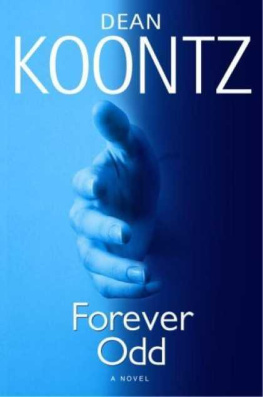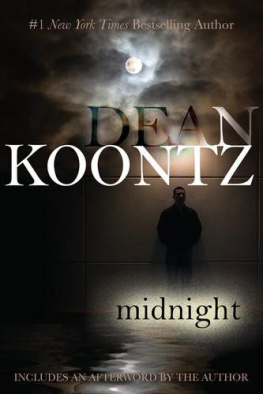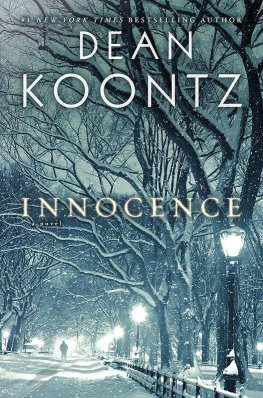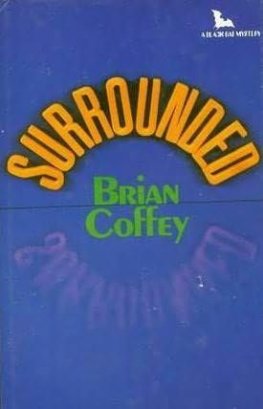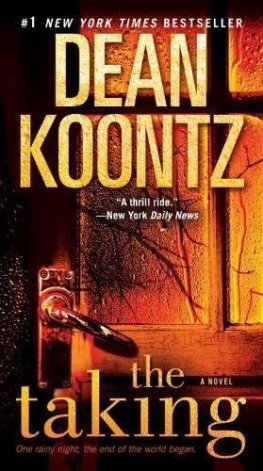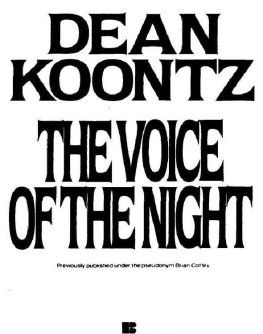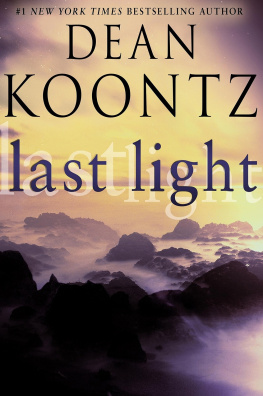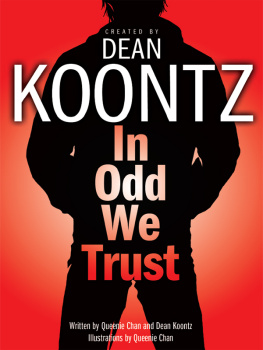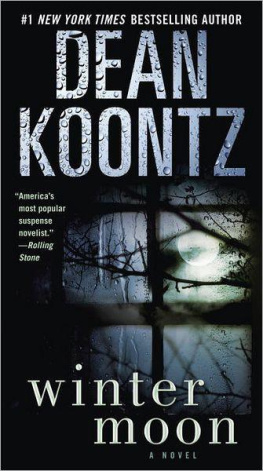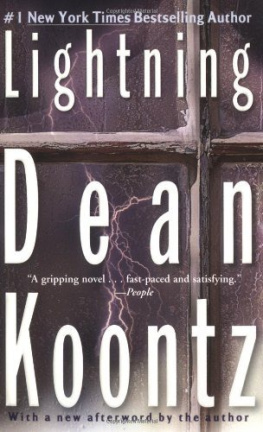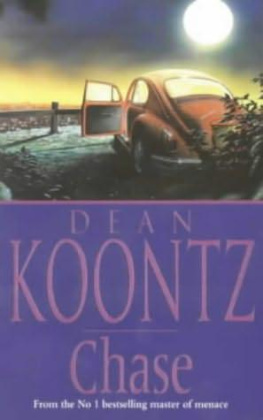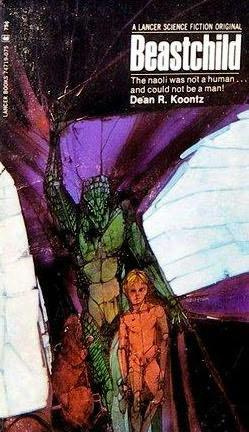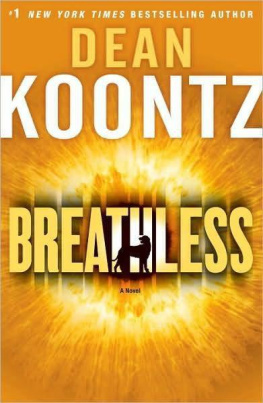Dean Koontz - Night Chills
Here you can read online Dean Koontz - Night Chills full text of the book (entire story) in english for free. Download pdf and epub, get meaning, cover and reviews about this ebook. genre: Detective and thriller. Description of the work, (preface) as well as reviews are available. Best literature library LitArk.com created for fans of good reading and offers a wide selection of genres:
Romance novel
Science fiction
Adventure
Detective
Science
History
Home and family
Prose
Art
Politics
Computer
Non-fiction
Religion
Business
Children
Humor
Choose a favorite category and find really read worthwhile books. Enjoy immersion in the world of imagination, feel the emotions of the characters or learn something new for yourself, make an fascinating discovery.

- Book:Night Chills
- Author:
- Genre:
- Rating:5 / 5
- Favourites:Add to favourites
- Your mark:
- 100
- 1
- 2
- 3
- 4
- 5
Night Chills: summary, description and annotation
We offer to read an annotation, description, summary or preface (depends on what the author of the book "Night Chills" wrote himself). If you haven't found the necessary information about the book — write in the comments, we will try to find it.
Night Chills — read online for free the complete book (whole text) full work
Below is the text of the book, divided by pages. System saving the place of the last page read, allows you to conveniently read the book "Night Chills" online for free, without having to search again every time where you left off. Put a bookmark, and you can go to the page where you finished reading at any time.
Font size:
Interval:
Bookmark:
NIGHT CHILLS
Authors Introduction
BY THE TIME they have finished this book, many readers will be uneasy, frightened, perhaps even horrified. Once entertained, however, they will be tempted to dismiss Night Chills as quickly as they might a novel about demonic possession or reincarnation. Although this story is intended primarily to be a good read, I cannot stress strongly enough that the basic subject matter is more than merely a fantasy of mine; it is a reality and already a major influence on all our lives.
Subliminal and subaudial advertising, carefully planned manipulation of our subconscious minds, became a serious threat to individual privacy and freedom at least as long ago as 1957. In that year Mr. James Vicary gave a public demonstration of the tachistoscope, a machine for flashing messages on a motion picture screen so fast that they can be read only by the subconscious mind. As discussed in chapter two of this book, the tachistoscope has been replaced, for the most part, by more sophisticated and shocking devices and processes. The science of behavior modification, as achieved through the use of subliminal advertising, is coming into a Golden Age of technological breakthroughs and advancements in theory.
Particularly sensitive readers will be dismayed to learn that even such details as the infinity transmitter (chapter ten) are not figments of the authors imagination. Robert Farr, the noted electronic security expert, discusses wiretapping with infinity transmitters in his The Electronic Criminals, as noted in the reference list at the end of this novel.
The drug that plays a central role in Night Chills is a novelist's device. It does not exist. It is the only piece of the scientific background that I have allowed myself to create from whole cloth. Countless behavioral researchers have conceived of it. Therefore, when I say that it does not exist, perhaps I should add one cautionary word yet.
Those who are studying and shaping the future of subliminal advertising will say that they have no intention of creating a society of obedient robots, that such a goal would be in violation of their personal moral codes. However, as have thousands of other scientists in this century of change, they will surely learn that their concepts of right and wrong will not restrict the ways in which more ruthless men will use their discoveries.
D. R. K.
THE BEGINNING
Saturday, August 6, 1977
THE DIRT TRAIL was narrow. Drooping boughs of tamarack, spruce, and pine scraped the roof and brushed the side windows of the Land Rover.
Stop here, Rossner said tensely.
Holbrook was driving. He was a big, stem-faced man in his early thirties. He gripped the wheel so tightly that his knuckles were bloodless. He braked, pulled the Rover to the right, and coasted in among the trees. He switched off the headlamps and turned on a dash light.
Check your gun, Rossner said.
Each man wore a shoulder holster and carried a SIC-Petter, the finest automatic pistol in the world. They pulled the magazines, checked for a full complement of bullets, slammed the magazines back into the butts, and holstered the guns. Their movements seemed to be choreographed, as if they had practiced this a thousand times.
They got out and walked to the back of the car.
At three oclock in the morning, the Maine woods were ominously dark and still.
Holbrook lowered the tailgate. A light winked on inside the Rover. He threw aside a tarpaulin, revealing two pairs of rubber hip boots, two flashlights, and other equipment.
Rossner was shorter, slimmer, and quicker than Holbrook.
He got his boots on first. Then he dragged the last two pieces of their gear from the car.
The main component of each device was a pressurized tank much like an aqualung cylinder, complete with shoulder straps and chest belt. A hose led from the tank to a stainless-steel, pinspray nozzle.
They helped each other into the straps, made certain their shoulder holsters were accessible, and paced a bit to get accustomed to the weight on their backs.
At 3:10 Rossner took a compass from his pocket, studied it in his flashlight beam, put it away, and moved off into the forest.
Holbrook followed, surprisingly quiet for such a large man. The land rose rather steeply. They had to stop twice in the next half hour to rest.
At 3:40 they came within sight of the Big Union sawmill. Three hundred yards to their right, a complex of two- and three-story clapboard and cinder-block buildings rose out of the frees. Lights glowed at all the windows, and arc lamps bathed the fenced storage yard in fuzzy purplish-white light. Within the huge main building, giant saws stuttered and whined continuously. Logs and cut planks toppled from conveyor belts and boomed when they landed in metal bins.
Rossner and Holbrook circled around the mill to avoid being seen. They reached the top of the ridge at four oclock.
They had no difficulty locating the man-made lake. One end of it shimmered in the wan moonlight, and the other end was shadowed by a higher ridge that rose behind it. It was a neat oval, three hundred yards long and two hundred yards wide, fed by a gushing spring. It served as the reservoir for both the Big Union mill and the small town of Black River that lay three miles away in the valley.
They followed the six-foot-high fence until they came to the main gate. The fence was there to keep out animals, and the gate was not even locked. They went inside.
At the shadowed end of the reservoir, Rossner entered the water and walked out ten feet before it rose nearly to the tops
of his hip boots. The walls of the lake slanted sharply, and the depth at the center was sixty feet.
He unraveled the hose from a storage reel on the side of the tank, grasped the steel tube at the end of it, and thumbed a button. A colorless, odorless chemical exploded from the nozzle. He thrust the end of the tube underwater and moved it back and forth, fanning the fluid as widely as possible.
In twenty minutes his tank was empty. He wound the hose around the reel and looked toward the far end of the lake. Holbrook had finished emptying his tank and was climbing out onto the concrete apron.
They met at the gate. Okay? Rossner asked.
Perfect.
By 5:10 they were back at the Land Rover. They got shovels from the back of the car and dug two shallow holes in the rich black earth. They buried the empty tanks, boots, holsters, and guns.
For two hours Holbrook drove along a series of rugged dirt trails, crossed St. John River on a timber bridge, picked up a graveled lane, and finally connected with a paved road at half past eight.
From there Rossner took the wheel. They didnt say more than a dozen words to each other.
At twelve thirty Holbrook got out at the Starlite Motel on Route 15 where he had a room. He closed the car door without saying good-by, went inside, locked the motel door, and sat by the telephone.
Rossner had the Rovers tank filled at a Sunoco station and picked up Interstate 95 south to Waterville and past Augusta. From there he took the Maine Turnpike to Portland, where he stopped at a service area and parked near a row of telephone booths.
The afternoon sun made mirrors of the restaurant windows and flashed off the parked cars. Shimmering waves of hot air rose from the pavement.
He looked at his watch. 3:35.
He leaned back and closed his eyes. He appeared to be nap
ping, but every five minutes he glanced at his watch. At 3:55 he got out of the car and went to the last booth in the row.
At four oclock the phone rang.
Rossner.
The voice at the other end of the line was cold and sharp:
Font size:
Interval:
Bookmark:
Similar books «Night Chills»
Look at similar books to Night Chills. We have selected literature similar in name and meaning in the hope of providing readers with more options to find new, interesting, not yet read works.
Discussion, reviews of the book Night Chills and just readers' own opinions. Leave your comments, write what you think about the work, its meaning or the main characters. Specify what exactly you liked and what you didn't like, and why you think so.

